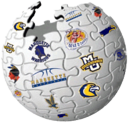And you run and you run to catch up with the sun, but its sinking
The helplessness captured in these classic Roger Waters lyrics must reflect the frustration of the folks at the NCAA these days as they grapple with the impact of rapid technology adoption on recruiting. Today and tomorrow the NCAA is meeting to consider a proposal from Ivy League institutions that would ban the use of text messages by recruiters (read coaches).
And racing around to come up behind you again
The outcome of this week's debate is uncertain, but the NCAA recognizes that the recruiting game has changed due to the ever-accelerating pace of technology adoption. Over time the NCAA has gradually shortened recruiting windows, minimizing the amount of time coaches can watch prospects play or meet with them in person, largely to protect the interests of the student-athletes.
Technology provided a dandy way around this trend, primarily through text messaging.
Today coaches can text message recruits as much as they want - - there is no limit to this method of contact under current NCAA guidelines. And don't forget about blogs, social networking sites, stand-alone Web pages, and other electronic means of marketing a program to prospective recruits - - - most (all?) of which fall outside of the guidelines currently addressed in the 460-page NCAA rulebook.
With young people so eager to adopt new forms of technology, coaches that evolve quickly could have an advantage. Or not. Consider that the receiver pays for incoming text messages -- could this be considered an invasion of privacy, or at the very least inconsiderate if the recruiting target has limited financial means?
The 'simple' issue of using technology to recruit quickly becomes complicated when the discussion gets down to the brass tacks.
According to Cellular News, "more than 158 billion text messages were sent in 2006, representing a 95% increase over 2005 and more than 2.7 billion MMS messages sent in 2006, up from 1.1 billion in 2005."
Remarkable. And that's just text messages and MMS (multimedia messages). There are 55 million blogs out there too. And while MicroPersuasion reports that new bloggers 'flatlined' recently, the readership of those blogs continued to increase.
The challenge before the NCAA is great. Young people today are the primary drivers of end-user oriented technology like text messaging. For example, the University of Florida reported that 75% of their freshman class signed up for its 'Mobile Campus' offering, a cell phone messaging service the university offers to students, faculty, and staff.
Reigning-in technology is impossible, so the pressure is on the NCAA to adopt an enlightened policy that protects the interests of its prospective student-athletes while serving the needs of the institutions it represents. This will be an interesting space to watch.
Monday, April 16, 2007
NCAA to Address Impact of Technology on Recruiting
Written by
TB
at
8:00 AM
![]()
Labels: NCAA, recruiting
Subscribe to:
Post Comments (Atom)

No comments:
Post a Comment